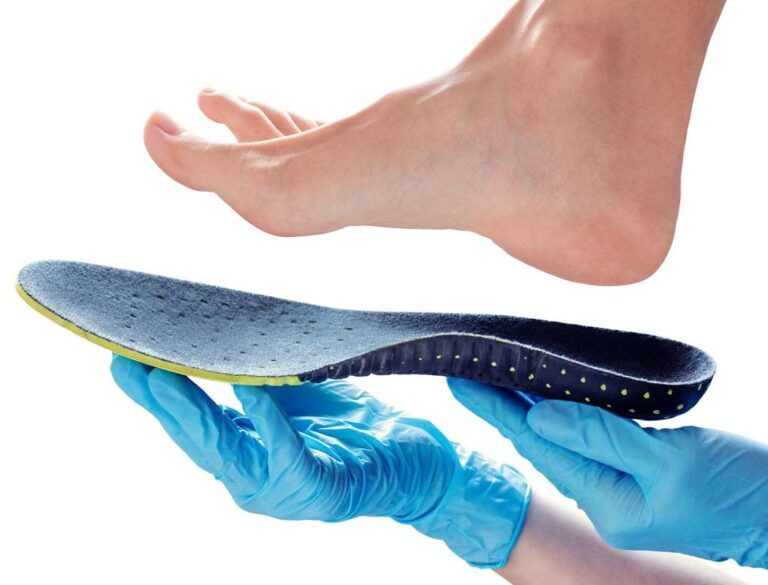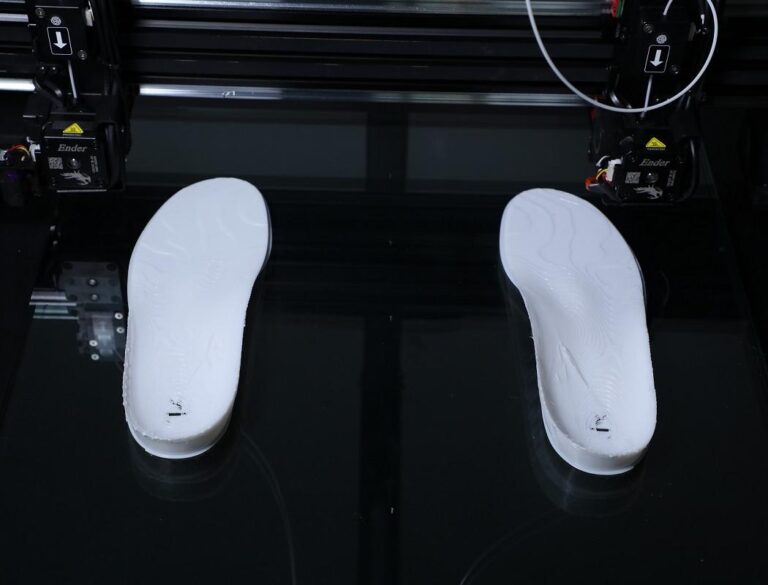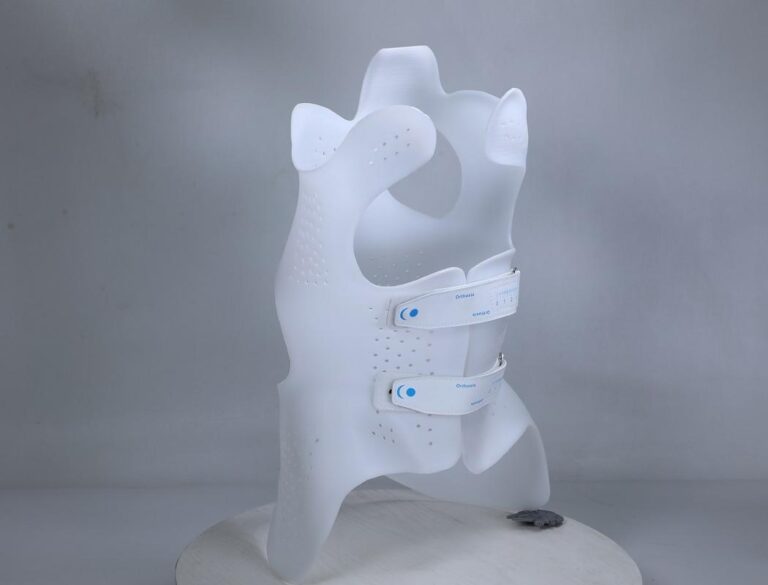Table of Contents
3D printing is revolutionizing education by giving students and educators the tools to bring their ideas to life. From schools to universities, 3D printing is becoming an essential part of the learning experience, enhancing creativity, problem-solving skills, and the understanding of complex concepts. This technology is providing new opportunities in fields like engineering, architecture, history, and automotive design, while also shaping how we approach science, technology, engineering, and mathematics (STEM) education.
In this blog post, we’ll explore how 3D printing is being used in education, the educational pathways needed to excel in the field, the benefits of 3D printing for students, and the best 3D printers for academic settings.
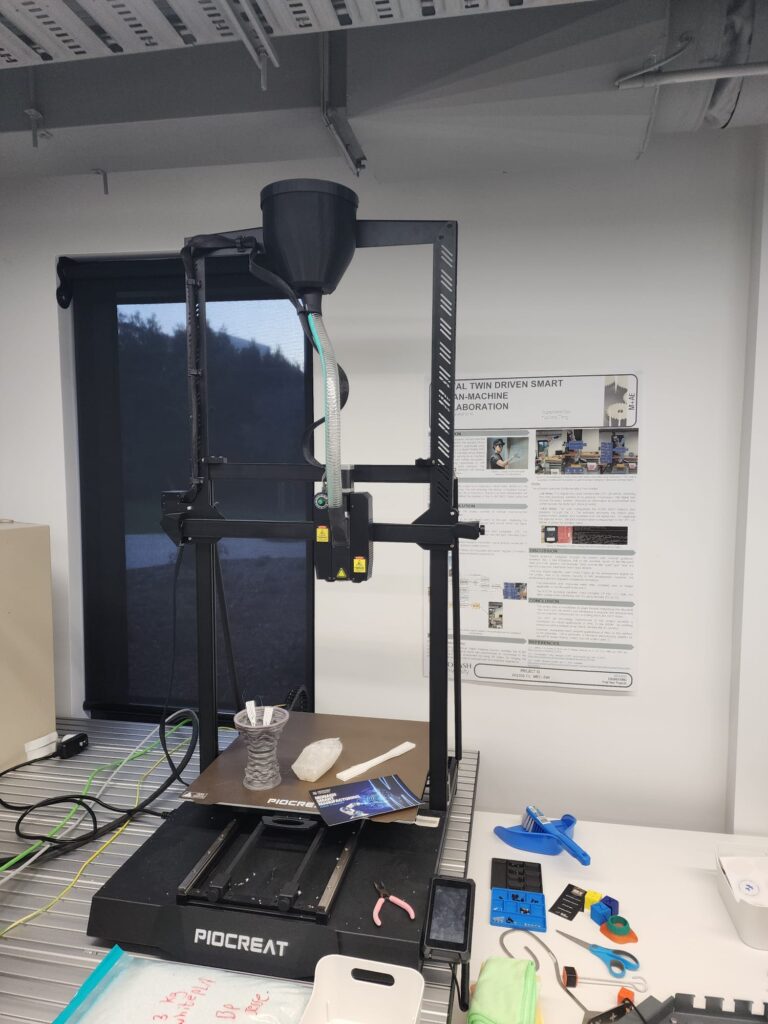
How is 3D Printing Being Used in Education?
3D printing’s application in education spans from elementary schools to advanced university programs, providing new ways to approach learning across various disciplines.
3D Printing in Universities
In higher education, particularly at universities and research institutions, 3D printing plays a crucial role in engineering, architecture, healthcare, and industrial design programs. It allows students to create prototypes, test their designs, and even produce parts for research purposes. For example:
- Engineering students can design and print functional prototypes, improving their hands-on understanding of mechanical systems, product development, and material properties.
- Medical students are using 3D printing to create models of human organs for practice before surgery, and in some advanced cases, they are experimenting with bioprinting tissues.
- Architecture students can bring their designs to life by printing detailed 3D models of buildings and structures, enabling them to visualize and test their ideas in a tangible way.
Many universities have invested in 3D printing labs that support a range of academic disciplines, fostering interdisciplinary collaboration and innovation.
3D Printing in Schools
At the K-12 level, 3D printing introduces students to the world of design, engineering, and technology in an engaging and practical way. It is often integrated into STEM (Science, Technology, Engineering, and Mathematics) curricula, encouraging students to solve real-world problems and develop technical skills.
For example, teachers in science classes may use 3D printing to create models of molecules, cells, or even geological formations, helping students better understand complex subjects. In art and design courses, students can experiment with creating custom sculptures or functional objects, providing a creative outlet that ties into broader academic goals.
What Education is Required for 3D Printing?
To become proficient in 3D printing technology, students typically pursue formal education in related fields. While some applications of 3D printing can be learned through workshops and hands-on experience, advanced roles in engineering, design, and manufacturing often require postsecondary education.
Postsecondary Education
Many 3D printing engineers hold bachelor’s degrees in fields like mechanical, chemical, industrial, hardware, mechatronics, software, or materials engineering. These programs provide foundational knowledge in design, materials science, and manufacturing processes that are essential for working with 3D printing technology.
Technicians, on the other hand, generally have at least an associate’s degree in fields such as engineering technology or computer science. These programs focus on the technical skills needed to operate and maintain 3D printers, troubleshoot problems, and handle design software.
A growing number of colleges and universities are now offering specialized degrees and certificates in 3D printing technology, additive manufacturing, advanced manufacturing, and digital manufacturing. For example:
- Century College in White Bear Lake, MN, offers an associate degree in additive and digital manufacturing, along with a biofabrication technologist certificate.
- Pennsylvania State University, Carnegie Mellon University, and the University of Maryland offer graduate degrees in additive manufacturing, preparing students for careers at the forefront of 3D printing innovation.
These programs provide students with a deep understanding of the latest technologies and techniques, making them valuable contributors to industries such as aerospace, healthcare, and industrial design.
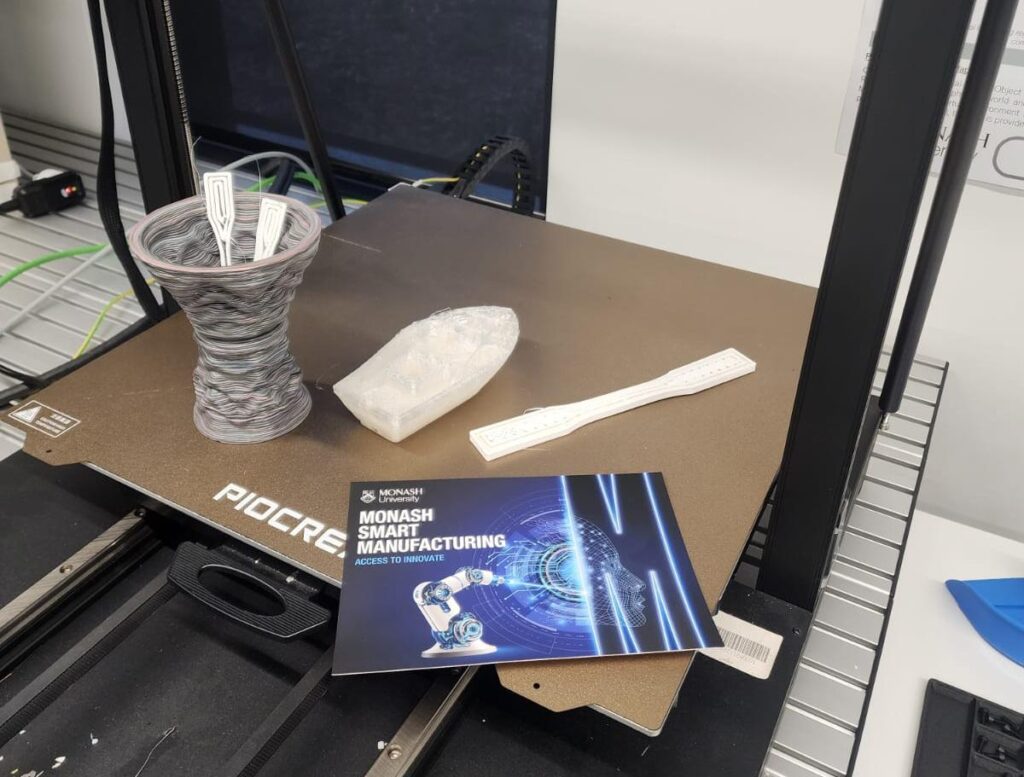
Examples of 3D Printing in Education
3D printers are widely used in university laboratories across various fields due to their versatility and ability to produce rapid prototypes, functional parts, and intricate models. Their applications range from engineering and design to biomedical research, architecture, and even art. Here’s an overview of how 3D printers are typically used in university settings:
1. Prototyping and Design:
- Engineering & Product Design: In mechanical engineering and industrial design labs, students and researchers use 3D printers to create prototypes of devices, components, and machines. This accelerates the design iteration process, allowing quick testing and refinement of concepts.
- Architecture: Architecture students use 3D printers to create detailed scale models of buildings and urban layouts. This helps them visualize their designs more tangibly, enhancing both their presentations and spatial understanding.
2. Biomedical Research:
- Medical Models and Prosthetics: 3D printers are often used to print anatomical models from patient scans (CT or MRI data), which helps medical students and surgeons prepare for surgeries. Researchers also explore bio-printing tissues, scaffolds for tissue engineering, and even custom prosthetics tailored to individual patients.
- Pharmaceutical Research: Some university labs use 3D printers to develop drug delivery devices or study how different shapes and structures affect drug release and absorption in the body.
3. Material Science and Engineering:
- Testing New Materials: Researchers in material science may use 3D printing to experiment with novel materials, such as composites, metals, or polymers. It allows them to test mechanical properties like strength, flexibility, and durability.
- Advanced Manufacturing Techniques: 3D printing, particularly additive manufacturing, is used to develop new manufacturing techniques, improve production efficiency, and reduce material waste.
4. Chemistry and Microfluidics:
- Custom Lab Equipment: Chemistry departments often print custom lab tools, such as reaction vessels or mixers, tailored to specific experimental needs. Microfluidics, a field that designs tiny devices to control fluids at the microscale, also benefits from 3D printing’s precision to create small, complex channels and components.
5. Robotics and Electronics:
- Robot Parts and Drones: 3D printers are essential in robotics labs for printing parts like gears, casings, and structural components for robots and drones. This enables quick modifications and enhancements.
- Circuit Printing: In some electronics and engineering labs, advanced 3D printers are used to create conductive traces, allowing students and researchers to print custom circuit boards.
6. Art and Design:
- Creative Sculptures: Art departments use 3D printers to create sculptures, jewelry, and other intricate art pieces. Artists can push the boundaries of traditional sculpture, creating complex geometric shapes that would be nearly impossible by hand.
- Fashion Design: Fashion students can use 3D printers to create wearable pieces, such as jewelry or even fabric-like structures, integrating technology with traditional textile design.
What Are the Benefits of 3D Printing for Students?
The integration of 3D printing into education offers several key benefits for students:
Fosters Creativity
3D printing empowers students to bring their ideas to life, encouraging creativity and innovation. Whether they are designing sculptures in art class or prototyping products in an engineering course, students are given the freedom to explore their imaginations and create something tangible.
Critical Thinking and Research
The process of designing for 3D printing involves problem-solving and critical thinking. Students must think through the mechanics of their designs, consider material properties, and optimize the structure for printing. This level of complexity helps sharpen their analytical skills and promotes deeper learning.
STEM Education
3D printing is a powerful tool for enhancing STEM education. It offers practical applications for science, technology, engineering, and math, making these subjects more accessible and engaging. For example, students can print out models of scientific concepts, experiment with mechanical systems, and apply mathematical principles to create complex designs.
Assists with Challenging Concepts
In subjects that are difficult to visualize, such as geometry, biology, or physics, 3D printing can bring abstract concepts to life. Students can print physical models that help them better understand difficult concepts, making learning more interactive and effective.
3D Printers for Education
Selecting the right 3D printer for an educational environment depends on the specific needs of the program. One of the most suitable options for schools and universities is a Fused Granulate Fabrication (FGF) 3D printer, which provides speed, flexibility, and cost-efficiency.
PioCreat G5Ultra Desktop Pellet 3D Printer
The PioCreat G5Ultra is a desktop-sized FGF 3D printer designed for educational settings. With a built volume of 500×500×400mm, it offers a large enough workspace for a variety of educational projects, from design prototypes to functional parts. Key features include:
- Cost-effective thermoplastic pellets as feedstock, which significantly reduces material costs.
- Nozzle temperature of up to 420℃, allowing for a wide range of material options.
- Rapid hot bed heating up to 120℃, ensuring efficient production times.
- Screw extruder design, which accommodates various materials, making it versatile for both research and teaching.
The G5Ultra is designed to meet the needs of schools, universities, design studios, and research labs, offering a flexible solution for educational purposes.
Conclusion
3D printing is transforming education by enabling students and educators to explore new ideas, solve complex problems, and create tangible objects that enhance the learning process. From universities to K-12 schools, 3D printing provides hands-on experience in fields like engineering, architecture, history, and automotive technology. As 3D printing technology continues to evolve, its role in education will only grow, empowering the next generation of innovators and problem-solvers.
